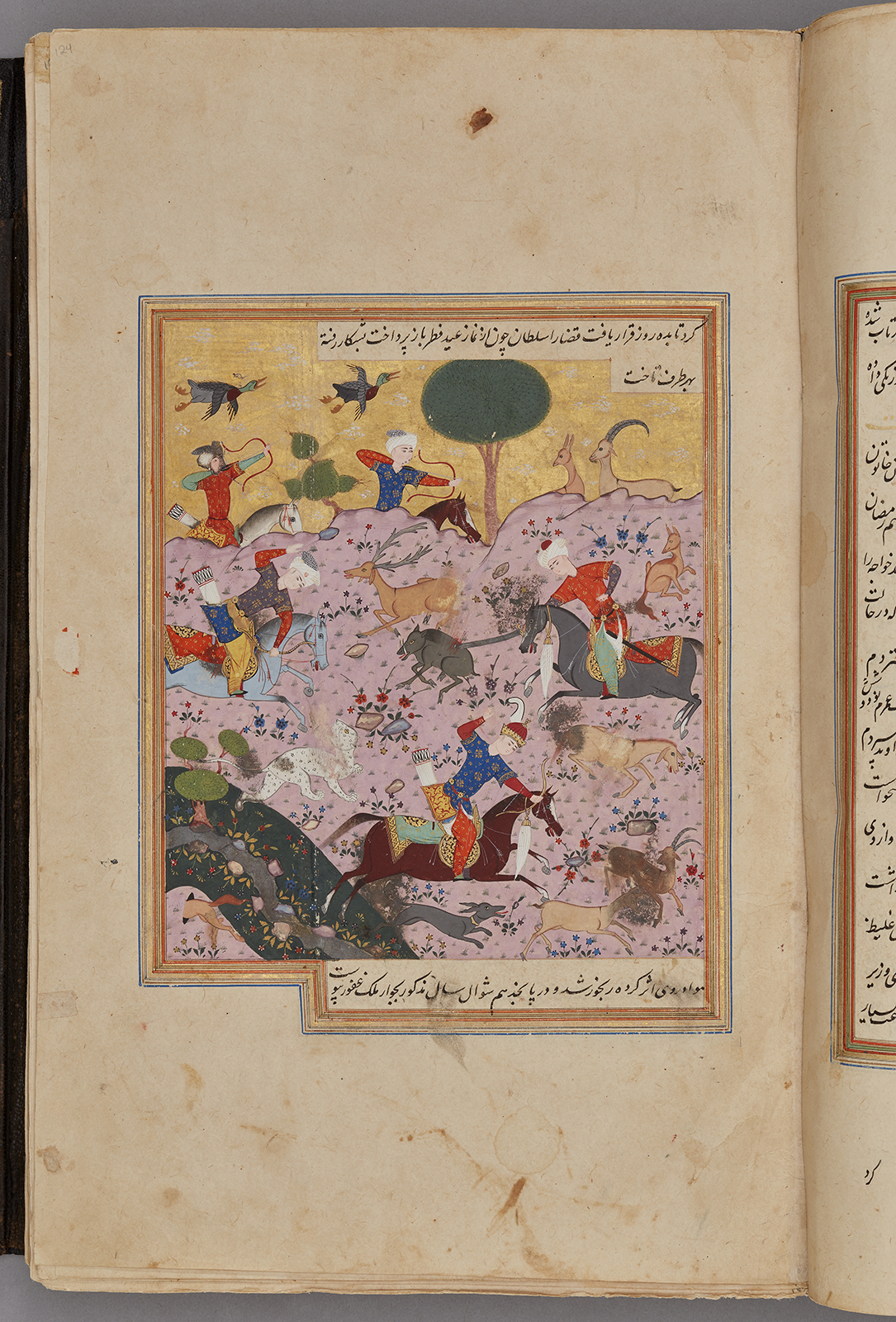Click on the image to zoom
The hunting Sultan, Folio from a manuscript of Nigaristan
- Accession Number:AKM272.f124r
- Creator:Author: Ahmad b. Muhammad Ghaffari, Persian, died 1567 Scribe: Ahmad al-Shirazi
- Place: Iran, Shiraz (probably)
- Dimensions:38.7 cm × 25 cm × 6.4 cm
- Date:1573-74 CE/980 AH/AH 980
- Materials and Technique: Ink, opaque watercolour, and gold on paper
The miniature painting "The hunting Sultan" is from an intact manuscript of Kitab-i Nigaristan, a collection of anecdotes and historical incidents written in prose by the historian and scholar Ahmad Muhammad Ghaffari (1504–1567/68) of Kashan in 1551–2. This illustrated manuscript, dated 1573, was probably produced in a Shiraz workshop.See AKM272 for more information about the manuscript and links to the other illustrations.
Further Reading
The miniature painting is an illustration of a classical hunt scene, which typically depicts hunters on a landscape surrounded by rocks or perhaps divided by a stream. Due to the high horizon line, the landscape fills most of the folio and builds the background of the scene. Flowers are scattered across the landscape. Behind the rock two more hunters aim at wild animals and birds. Further down are gazelles, wild boar, leopards, and lions. Four hunters—one a ruler—are depicted on a violet background of the steppe landscape. The twisted upper bodies of the hunters shows that they are in the midst of shooting their arrows.
The framing in this illustration is irregular: the lower border of the picture is stepped on the left. The dominant red colour is harmoniously distributed throughout the picture and is also found in the hunters' clothes. The sky is golden, as it is throughout the Nigaristan where a king is present.
The narrative is based on Ibn Ghawzi: the Seljuk sultan intends to conquer Baghdad and depose the ʿAbbasid caliph Muqtadir because he suspects him of having killed his daughter, whom he had given to the caliph as his wife. Out of consideration for the holiness of the month of Ramadan, Muqtadir asks the Seljuk to postpone the enterprise. At the feast of breaking the fast, the sultan decides to go hunting rather than fulfill his religious duties. God's providence determines that he die of heat stroke that same day.
The text, which is limited to the upper margin of the illustration, deals with the last fateful scene in which the sultan, instead of praying, goes hunting on the high feast day just before he succumbs to heatstroke.
- Elika Palenzona-Djalili
Note: This online resource is reviewed and updated on an ongoing basis. We are committed to improving this information and will revise and update knowledge about this object as it becomes available.


